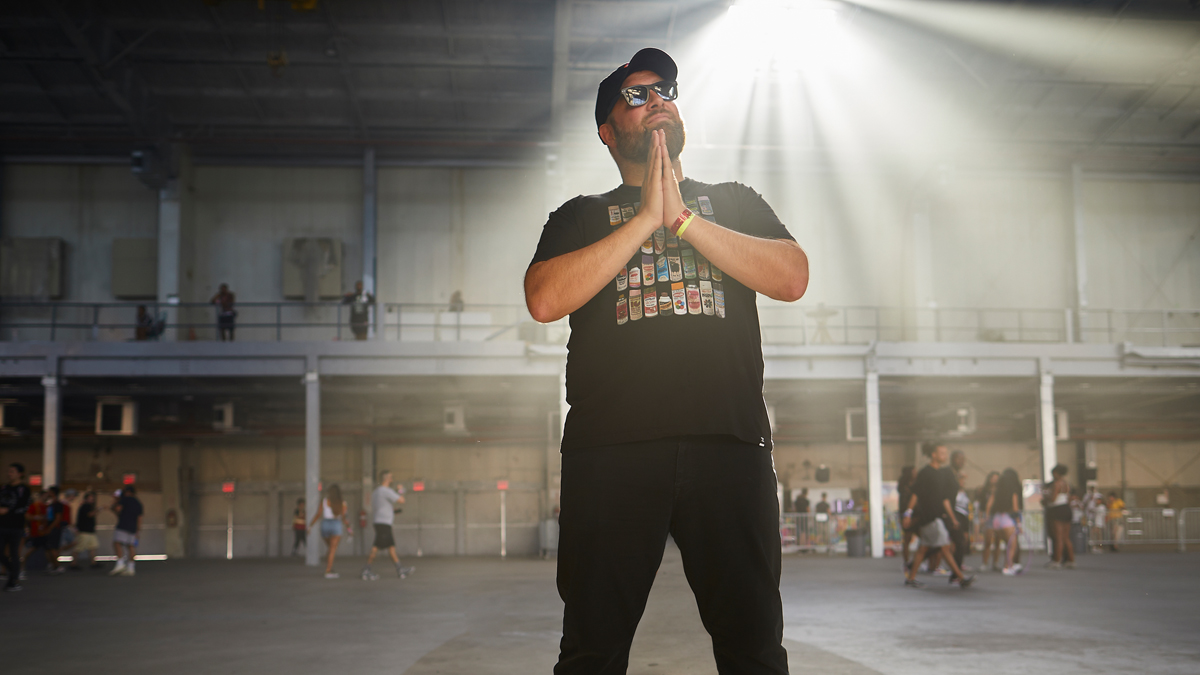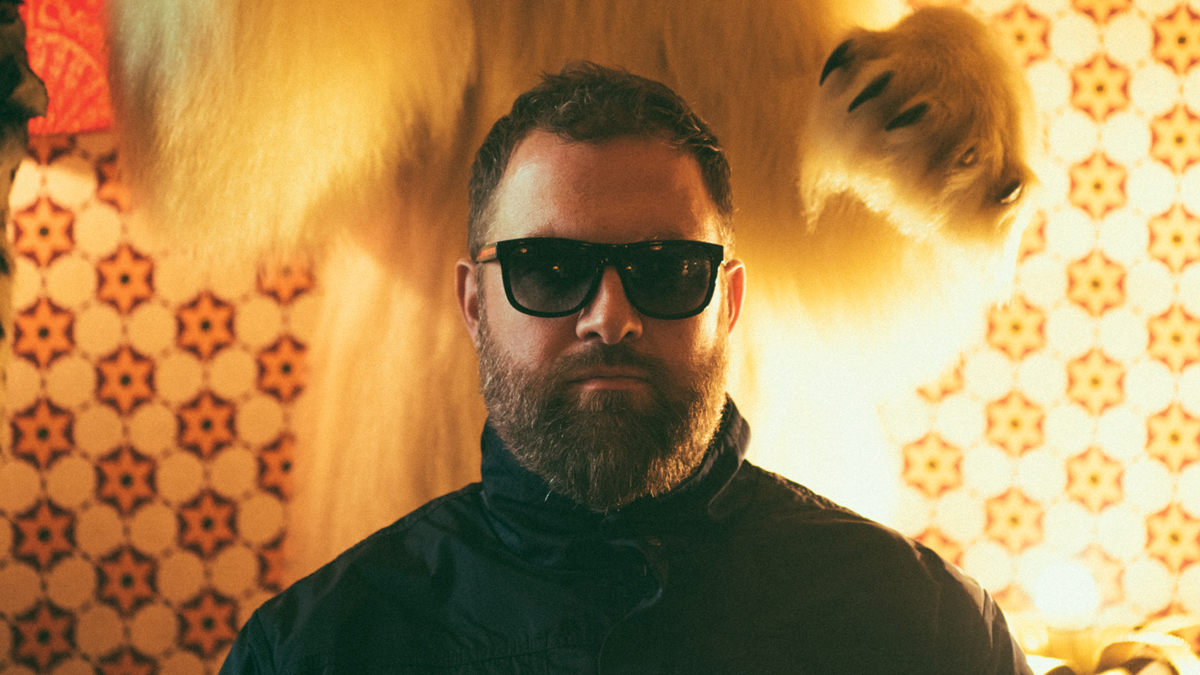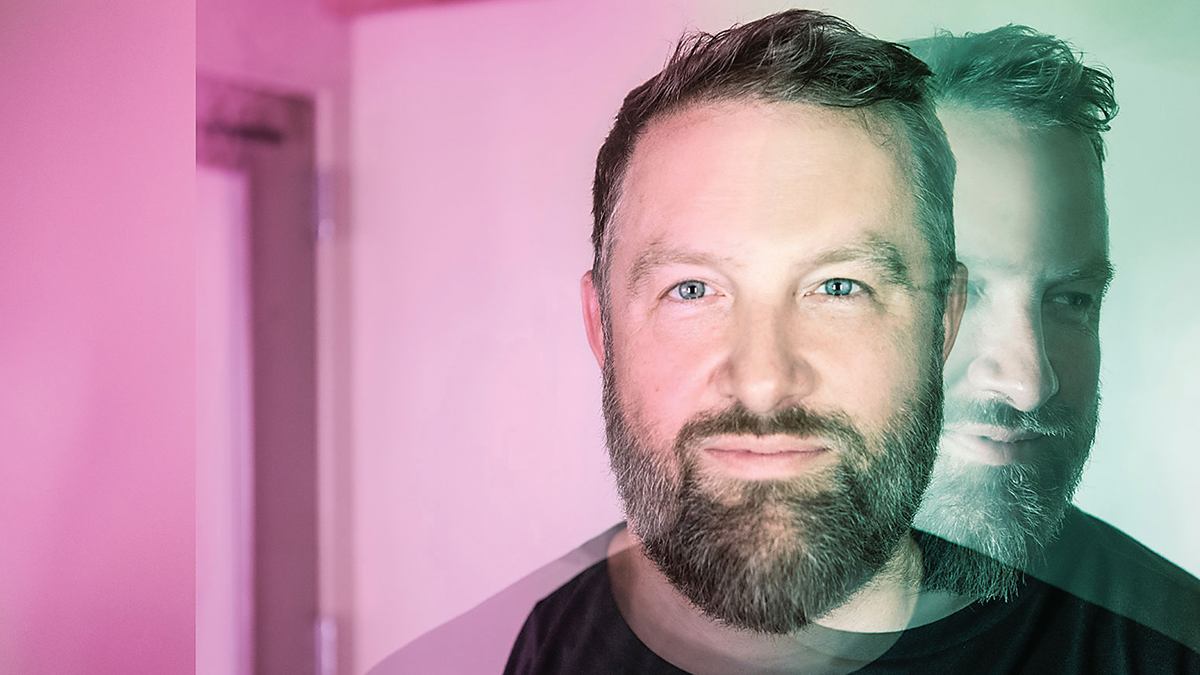Claude VonStroke: “A copy of Ableton and a Mac right now is better than a $500,000 studio in 1987”
Best of 2021: The Dirtybird boss on starting out and finding your voice

BEST OF 2021: “A lot of [Claude VonStroke’s] success,” reads his Resident Advisor biography, “can be attributed to a good attitude”.
While this is undeniably true, another sizeable chunk of the man born Barclay Crenshaw’s success is in his business strategy of taking a style of music not known for its warmth and serving it up with a dose of good old American gusto - to increasingly sizeable crowds at that.
But if the above makes the DJ, producer and Dirtybird label boss sound like a dollar-signs-for-eyes accountant type, you just need to glance over his often playfully named discography.
Recent EP Raggadagga, a collaboration with popular Polish dance act Catz ‘n’ Dogz, is a wired-up, “attention-grabbing” explosion of silliness and swagger. We found out more…
Why/how did you first get into music?
“I was always into music. I played piano and cello as a kid and eventually grew up into buying early samplers and sequencers. I was obsessed with the radio but mostly underground Detroit radio shows like Electrifying Mojo and The Wizard which featured extremely eclectic and diverse programming from Spoony G to Parliament to Blonde to Juan Atkins.
“Eventually after many, many years of working bad jobs and working hard jobs in the film industry I finally figured out how to make money doing music and Dirtybird (my label) was started.”
Get the MusicRadar Newsletter
Want all the hottest music and gear news, reviews, deals, features and more, direct to your inbox? Sign up here.
When and how would you say you became successful, or at least able to make a living from music?
“My wife was integral at the start in helping me plan how to save up. I would say saving up the right amount of money to properly start a label was the greatest asset I had early on. I was not just a dude in my bedroom hoping the first vinyl sold would mean he could press another. I was the dude in the bedroom who had busted his ass to save $25,000 so he didn’t have to wait to see if record #1 sold or not.
Don’t be samey. Everybody can make or DJ a house track; even my kids can make a rudimentary house track.
“The big moment was vinyl #003 Deep Throat. It was my debut record and it sold 12,000 vinyls all across the world. That doesn’t seem like a huge number but we would make two or three dollars on every copy and so it was enough for me to know we were going to make it.”
What is your overall philosophy or approach when it comes to music (playing, recording, production)?
“Don’t be samey. Everybody can make or DJ a house track; even my kids can make a rudimentary house track. Try to do something special every time. Even if you don’t achieve your ‘special’ feeling at least that is the goal. I think you can hear that over all my records and sets, even if it didn’t make them all the most original of all time. They all have a feeling that I tried to separate myself.”
When and how did you discover the route to computer music making and how has it changed the way you work?
“There was no internet so it was actually the magazines. Back in the day there were not 20 mags and 20,000 YouTube videos. I started in MOTU Performer on a really old tan Macintosh running an E-MU Emax sampler and a Roland MIDI controller. Everything I knew was just by word of mouth or magazines so I didn’t know very much.
“I bought a cassette-based 4-track recorder and a really, really terrible Kawaii drum machine to make tracks and that’s how I worked for many, many years. All that early stuff just makes me so grateful for what we have now. A copy of Ableton and a Mac right now is better than a $500,000 studio in 1987.”
Tell us about the rest of the gear in your studio…
“I use Ableton Live with Push but I also use Maschine because I find that I get a few more magical results in Maschine - who knows why?
“My whole back wall is rigged up with synths and drum machines from Prophet-6 to ASM Hydrasynth and DrumBrute Impact, etc. I think the total is about 14 things including a modular station.
“All of it is templated out into Ableton - this was a serious pain! I tried to run hardware sequencers on the back wall but I really found that it was pointless and that I needed just one main brain so I have my push on a foot switch that can start and stop record when I’m on the back wall.”
What are your favourite five plugins?
“This changes all the time butCableguys ShaperBox2 is so helpful - it’s incredible. You can shape the volume of your sounds like a transient shaper in any direction, slow down your sounds to half-time, filter them, pan them - and do it all by frequency. It’s so serious on the modulation, it’s amazing.
“Kick Tweak - so simple, it just does what it says it does.
“Camel Crusher - my favourite distortion. It was discontinued ages ago so I don’t know what I will do when it stops working! It’s the absolute nastiest distortion out there and it does sounds that newer more ‘advanced’ plugs like Decapitator just cannot match.
“Soundtoys MicroShift - simple stereo-sizer. I use it on every track somewhere. Nothing fancy here.
“UAD Precision Maximizer - this is the cleanest end to your mastering chain in my opinion. It brightens and gels without squashing. I prefer it even to the entire Ozone suite usually. I like simplicity; this sounds great and is simple.”

How does a track typically start structure wise and then progress?
“Typically, it’s a drum sketch. I do a lot of them and pick my favourites at a later session. Once I have it narrowed down to two or three really sick loops, then I start making the tracks.
“I have found this to be a much better use of my time. I used to try and beat every single thing I started into submission… but now I just throw away or recycle all the mediocre beats and only move forward with the cream.
“This is the advantage of just free-styling a ton of beats and then coming back to it all later. Once a track is started it goes really fast until mixing and polishing and then it goes really slow again [laughs].”
How do you know when a track is finished or what advice do you have on completing a track?
“For me it’s finished when I start adding things that do not affect the quality. At this point I usually turn the other direction and mute a few tracks to see if I can actually subtract some things. It’s always good to do subtraction exercises as well as addition exercises… ask yourself what do you really need to be in there?”
Talk us through at least one of your production tricks that you use and that perhaps defines your sound…
“This will sound quite rude but I recommend it for all producers actually. Most of my tracks have what I have unfortunately nicknamed a ‘fuck you’ moment. It’s a moment in the music where I try my best to say… ‘OK, here is the sound flipped and also reversed on a drum fill that you didn’t expect’.
“That is just a random example but essentially it’s a moment where I try to say to the listener, ‘I am a real music producer. I didn’t just chuck a bunch of loops into a bin. Check this out!’
“There is no set way to do this, it’s just a way of thinking. Take your track’s weirdest moment and just say, ‘OK what if I made this 300% more weird, like something nobody else would bother trying because it’s such a pain in the ass to execute?’. That’s the ‘fuck you’ moment.”
Catz ’n Dogz, who you’ve worked with on the recent EP, are longtime associates of yours. Tell us how the collaboration went…
“Catz ’n Dogz just make life easy; they are the best. They sent me a file. I loved it and I put all my touches on it and we had a track. It was lightning fast to do it (as most really fun tracks are). They did the vocal which is really the core. Originally there was a lot more to the vocal but immediately I recognised the main ‘Raggadagga!’ was such an incredible hook that it could live completely by itself and still carry the whole track.”
What is on your wishlist, studio gear wise?
“I am not a vintage synth collector so I just want everything that is the newest, most fun looking stuff. I absolutely want Maschine+ and the Arturia PolyBrute. Other than that I’m good. But if you have a stack of 200k PMC monitors you want to send me I will take them!”
What would you like to see developed in terms of studio technology and why?
“Everything for me right now is feeling. The polyphonic aftertouch on the ASM Hydrasynth is the way forward. Any new synth that doesn’t have some sort of maximum expression built into it isn’t getting my money. I also really hope MIDI 2.0 takes away all my massive MIDI headaches and sync headaches and that they can retrofit all the old stuff.”
Don’t be a genre snob because the people going out to parties don’t care.
What advice have you picked up from playing live, maybe for newcomers on the live scene?
“DJing music is the best way to hear if something works. I made electronic music for 10 years before I realised the importance of playing music for people. Yes, maybe you can create a niche on Bandcamp and Spotify for experimental music but if you want people to dance, you have to play in front of them to learn the lessons required to keep them moving.”
And from working in the studio?
“Don’t be a tight ass. Break out of your working techniques. Try other software. Try collabs that are uncomfortable because they might surprise you. I didn’t collab for my first 10 years and it was a mistake. Now I do it all the time. Also there is always more learning. You never know what you can learn from watching a video or having someone over.”

And from the music industry as a whole that you can pass on?
“Yeah, nobody cares about genres anymore. Don’t be a genre snob because the people going out to parties don’t care. Don’t limit yourself. Create or join a community that supports you instead of one that tears you down.”
Finally, amid all of the weirdness at the moment, can you tell us a few things you’ve been up to and share a few of your plans - or at the very least wishful thinking ones! - for the future?
CV: “Raggadagga is out now with Catz n Dogz. I also have a new track out with Mike Kerrigan on our Dirtybird Couch-Out festival compilation. Dirtybird have started a full TV network on Twitch: we have original programming seven nights a week all the way from yoga and cooking shows to techno, house and experimental shows. It’s called Dirtybird Live; it’s our biggest thing right now so check it out! I have shows on Thursdays at 5pm Pacific and Tuesdays at 8pm Pacific.”


Computer Music magazine is the world’s best selling publication dedicated solely to making great music with your Mac or PC computer. Each issue it brings its lucky readers the best in cutting-edge tutorials, need-to-know, expert software reviews and even all the tools you actually need to make great music today, courtesy of our legendary CM Plugin Suite.










